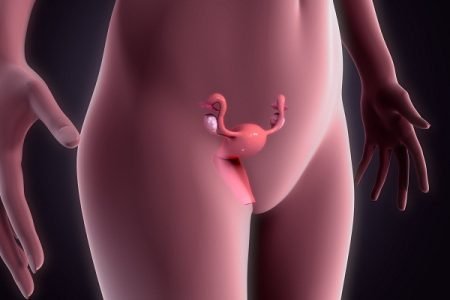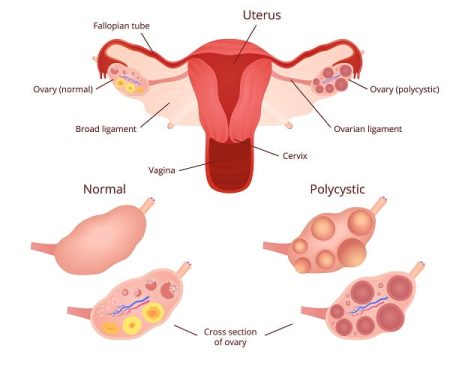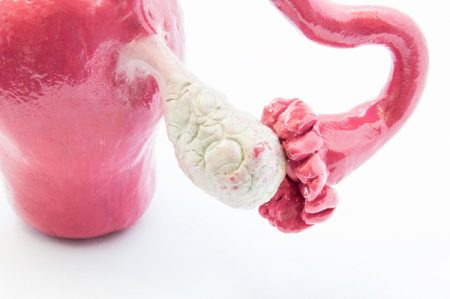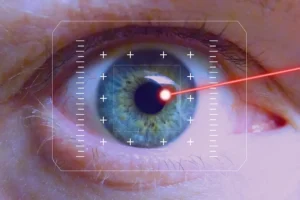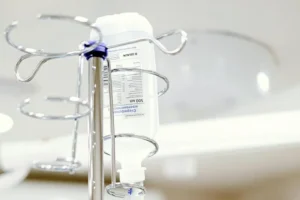What Is Endometriosis?
- Updated on: Nov 28, 2024
- 4 min Read
- Published on Sep 27, 2019
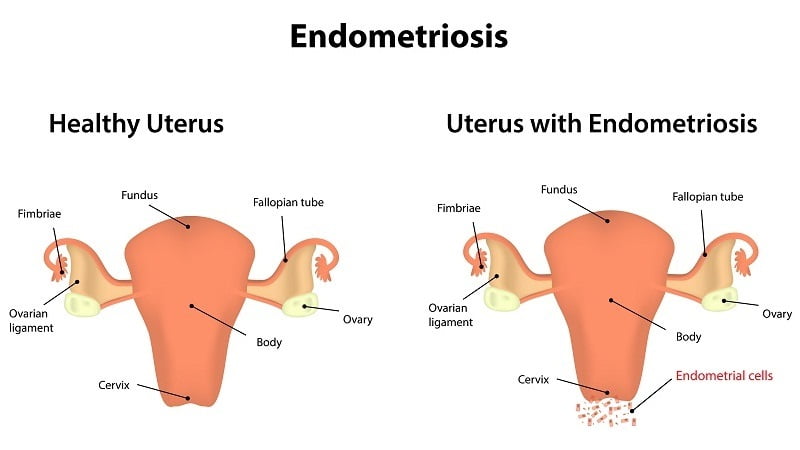

An Overview of endometriosis
Endometriosis is an abnormal disorder in which endometrium starts growing outside the uterus. In simple words, it can be described as a condition in which layer of tissue that covers inside of the uterus (endometrium), starts growing outside it.
The disease affects women in between the age of 30 and 40. In normal condition, endometrial tissue is shed out of vagina every month during menstruation. Endometrial tissues in abnormal location continue to act normally. This means it would thicken and break down at the end of each cycle. However, this displaced tissue gets trapped inside the body, as it does not have any exit.
The endometrial tissue found in outside locations is called as endometrial implants. These are lesions and are found on the outer surface of the ovaries, the fallopian tubes, surface of the uterus, the bowel, and on the membrane lining of the pelvic cavity (i.e. the peritoneum).
When endometriosis involves ovaries, cysts are formed in it. These cysts are called as endometriomas. This condition causes inflammation and scarring of surrounding tissues.
In addition, adhesion of pelvic tissues and organs also takes place. Endometriosis causes stern pain during menses. In severe cases, it causes fertility issues. Very rarely, the endometrial implants are found in vagina, cervix and bladder. The growth outside the uterus or other organs is not cancerous.
Symptoms of endometriosis
Endometriosis is a chronic disease. Most of the women suffering from this condition do not show any major symptoms. Sometimes, the woman suffering with it has chronic pain, most of it occurring at the time of periods.
The disease can have both social as well as psychological effects. Some common signs and symptoms are enlisted as:
- pelvic pain during menses
- painful sex
- infertility
- painful bowel movement or urination
Read more to learn about endometriosis symptoms.
What causes endometriosis?
The exact cause of endometriosis is yet not identified but family history of the disease is considered as a risk factor.
According to a survey, it is reported more in infertile women as compared to fertile women. Read about the causes and risk factors of endometriosis.
Diagnosis and treatment of endometriosis
Endometriosis can be diagnosed with the help of symptom patterns, physical examination and imaging techniques.
A biopsy is the most reliable method for diagnosis. The symptoms may sometimes overlap with those of pelvic inflammatory disease, irritable bowel syndrome, interstitial cystitis, and fibromyalgia.
There is no particular cure for endometriosis, but options to manage the symptoms are available. These include pain medicines, female hormone therapy, and surgery. Experts suggest that using the combined oral contraceptive pill or using intrauterine devices with progesterone can reduce the risk of endometriosis.
Regular exercise and avoiding alcohol may prevent this condition. The gonadotropin-releasing hormone can improve the situation for women trying to conceive. Surgical removal of endometriosis is another option when other treatments do not work.
Read more about diagnosis of endometriosis.
Read more about treatment of endometriosis.
Stages of Endometriosis
Endometriosis is classified into four categories on the basis of location, extent and severity of the disease.
Size of endometrial implants and severity of scarred tissue are other factors governing the categories.
Minimal and mild endometriosis results in superficial implants and scarring while cysts and severe scarring are a result of moderate and severe endometriosis. Fertility issues are quite common in severe endometriosis.
Following are the stages:
- Minimal
- mild
- moderate
- severe
Minimal endometriosis
Small lesions and shallow implants in ovaries characterize minimal endometriosis or stage-1 of endometriosis. Inflammation in and around pelvic region may also be seen.
Mild endometriosis
Stage-2 or mild endometriosis involves light wounds and shallow endometrial implants in ovaries as well as in pelvic lining.
Moderate endometriosis
Moderate endometriosis or stage-3 involves deep wounds and implants on ovaries and pelvic lining.
Severe endometriosis
Stage-4 or severe endometriosis involves deep implants on pelvic region and ovaries. The lesions may also be found on fallopian tube and bowel of the woman suffering from it.
With each menses (menstrual) cycle, the endometrial implants grow, breakdown and bleed just like the endometrial wall inside the uterus. As a result, pain and mild discomfort start few days before periods. Pain during certain activities such as sex, bowel movement and exercise is related to growing of implants in abnormal locations.
Quick facts about endometriosis
Endometriosis is a chronic disease that results in scarring of tissue. It induces inflammatory reaction primarily in pelvic region, ovaries, recto-vaginal, bladder and bowel.
Following are some quick facts about it:
- About 176 million women are affected by this condition that roughly accounts 10% of total women population.
- Infertile women have 30-50% chances of developing this condition.
- Endometriosis can start with the first period as a girl and may not resolve till menopause.
- It is the second most common gynecological condition worldwide.
- The condition is rarely found in the diaphragm.
- The lesions due to endometriosis can grow very large and often affect nerve tissue.
- In extreme cases, the lesions are found in the lungs and brain leading to cyst formation and adhesion of tissues.
- According to doctors, endometriosis is fueled by the estrogen (female hormone).
- It can take up to 10 years for the diagnosis.
- The causes are still not clear but the condition seems to run in families of already suffering women.
- The symptoms, as well as severity of pain, may vary from woman to woman
- Pregnancy may sometimes relieve the symptoms as during delivery endometrial wall sheds off completely.
- The condition has no cure till now.





